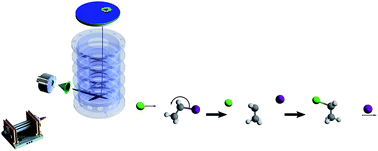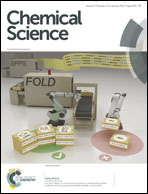Conservation of direct dynamics in sterically hindered SN2/E2 reactions
Abstract
Nucleophilic substitution (SN2) and base-induced elimination (E2), two indispensable reactions in organic synthesis, are commonly assumed to proceed under stereospecific conditions. Understanding the way in which the reactants pre-orient in these reactions, that is its stereodynamics, is essential in order to achieve a detailed atomistic picture and control over such processes. Using crossed beam velocity map imaging, we study the effect of steric hindrance in reactions of Cl− and CN− with increasingly methylated alkyl iodides by monitoring the product ion energy and scattering angle. For both attacking anions the rebound mechanism, indicative of a direct SN2 pathway, is found to contribute to the reaction at high relative collision energies despite being increasingly hindered. An additional forward scattering mechanism, ascribed to a direct E2 reaction, also contributes at these energies. Inspection of the product energy distributions confirms the direct and fast character of both mechanisms as opposed to an indirect reaction mechanism which leads to statistical energy redistribution in the reaction complex. This work demonstrates that nonstatistical dynamics and energetics govern SN2 and E2 pathways even in sterically hindered exchange reaction systems.



 Please wait while we load your content...
Please wait while we load your content...